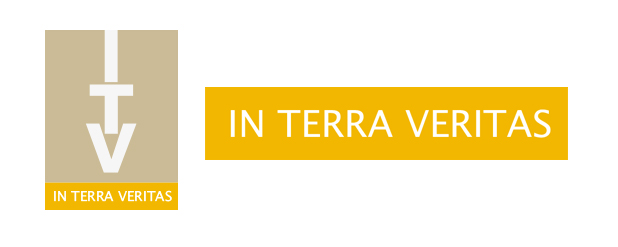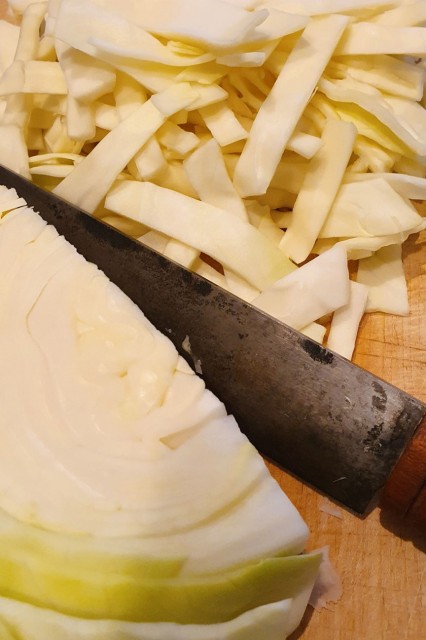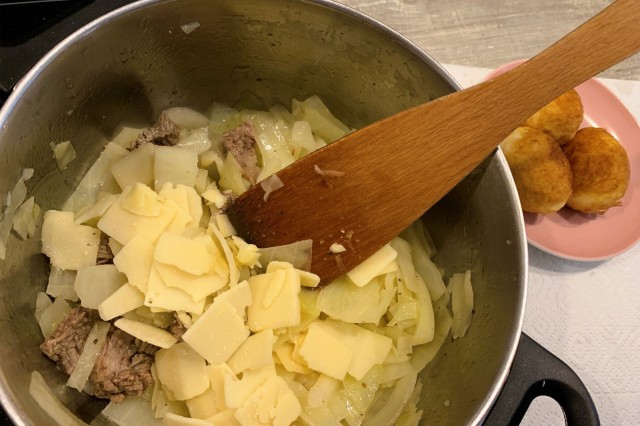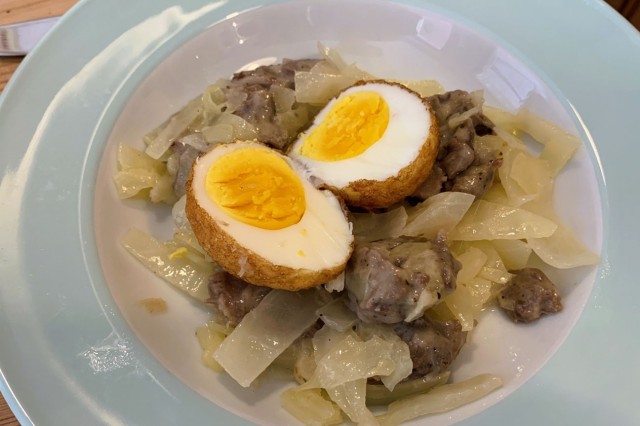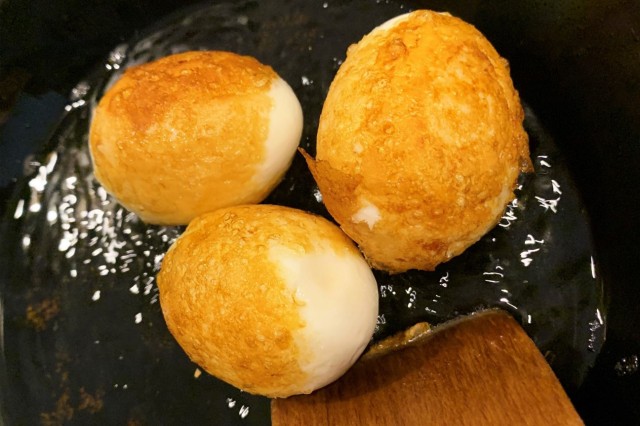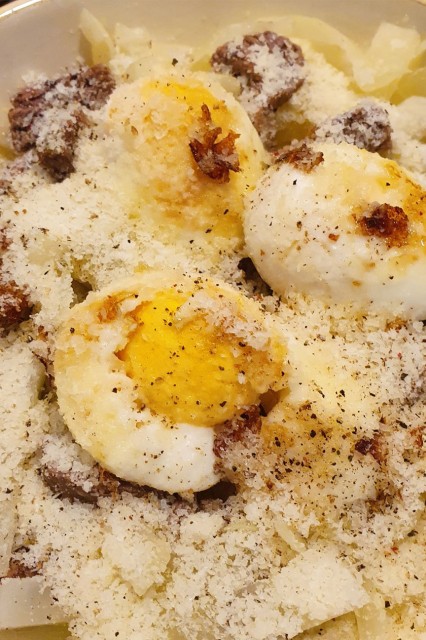What is the taste of the Middle Ages?
In search of the taste of the Middle Ages - Part 3
Recipes from back then cooked at home today. What to consider?
But the cuisine of Middle Earth has as little to do with historical cuisine as that of Hildegard. This is a fiction of the 1970s. Hildegard von Bingen was a polymath and an extraordinary woman of her time, but she was no cook!
Potatoes, tomatoes, peppers, soy, corn and cocoa were still unknown in medieval Europe. If they are listed as an ingredient in a recipe, then it either does not date back to the Middle Ages or it has been modernized beyond measure.
But almonds, rice, pomegranate, lemons, grapes, figs and dates are common ingredients, also stockfish, grains of paradise, long pepper, cinnamon or ginger.
Nim junges weiß kraut und sneid es zu spalten, so leg es in den topph und laß es sied und geus das wasßer ab. So hab gesotenes vleisch in einem anderen toph, scheffeins oder rinderns und leg das kraut dann zu dem vleisch. So nym und seud ayr hert. So schel sie und röst sy dann gantz in einer phann. Wenn das kraut und das vleisch nehet gosoten sey, so tue die ayr darin und herten kese und laß das aber mit ain ander sied und mach das gar vaist. Wildu es aber machen nit mit vleisch, so leg darauf ayr vor gemacht in der phann mit dem ches und gibs hin.
Ingredients:
1 small white cabbage
375g lamb or beef
8 eggs
fat for frying
125g hard cheese (for example: Parmesan)
50g butter
Variation with meat
Cut the white cabbage into 4 pieces, remove the thick stalk and cut the quarters into strips. Boil the cabbage in water until firm to the bite and then drain.
Cook the meat. Then add the cabbage to the meat in the meat broth and continue cooking together.
Hard boil the eggs and peel them. Fry the whole eggs in fat.
Add the fried eggs and cheese to the broth with the meat and cabbage and simmer until the cheese is melted. Do not forget to stir.
Finally, add the butter and let it melt.
Season to taste*.
Variation without meat (vegetarian)
Cut the white cabbage into 4 parts, remove the thick stalk and cut the quarters into strips. Boil the cabbage in water.
Hard boil the eggs and peel them. Fry the whole eggs in fat.
Finally, place eggs and cheese on top of cabbage.
Season to taste*.
Sources:
1) aus: Doris Aichholzer, „Wildu machen ayn guet essen …" Drei mittelhochdeutsche Kochbücher. Peter Lang Verlag, 1999, Rezept aus dem Dorotheenkloster, 14. Jh.
2) Vgl. Ernst Schubert, Essen und Trinken im Mittelalter, Darmstadt, 2006, S. 45 ff.
Realization and images: Claudia Zimmermann
